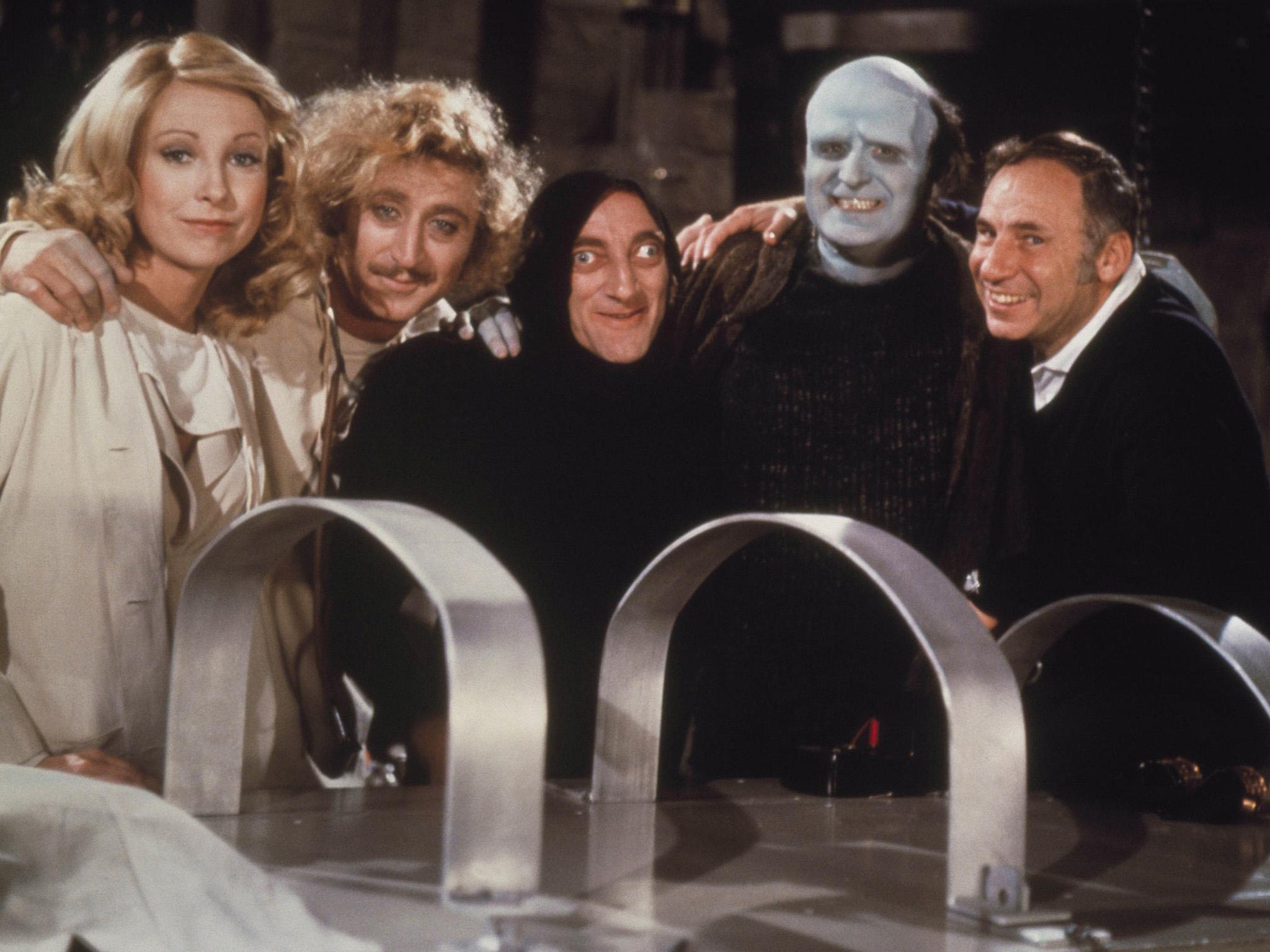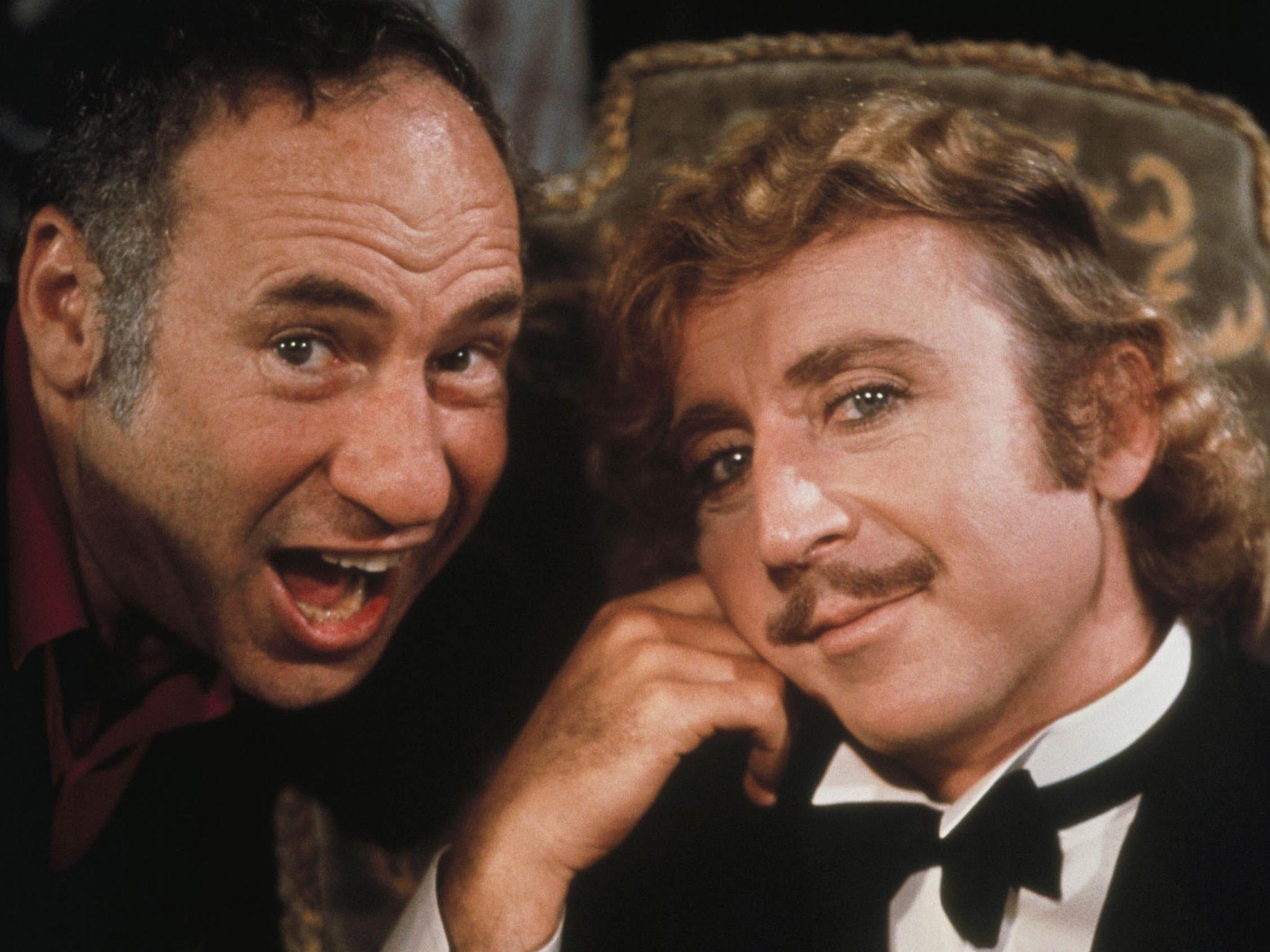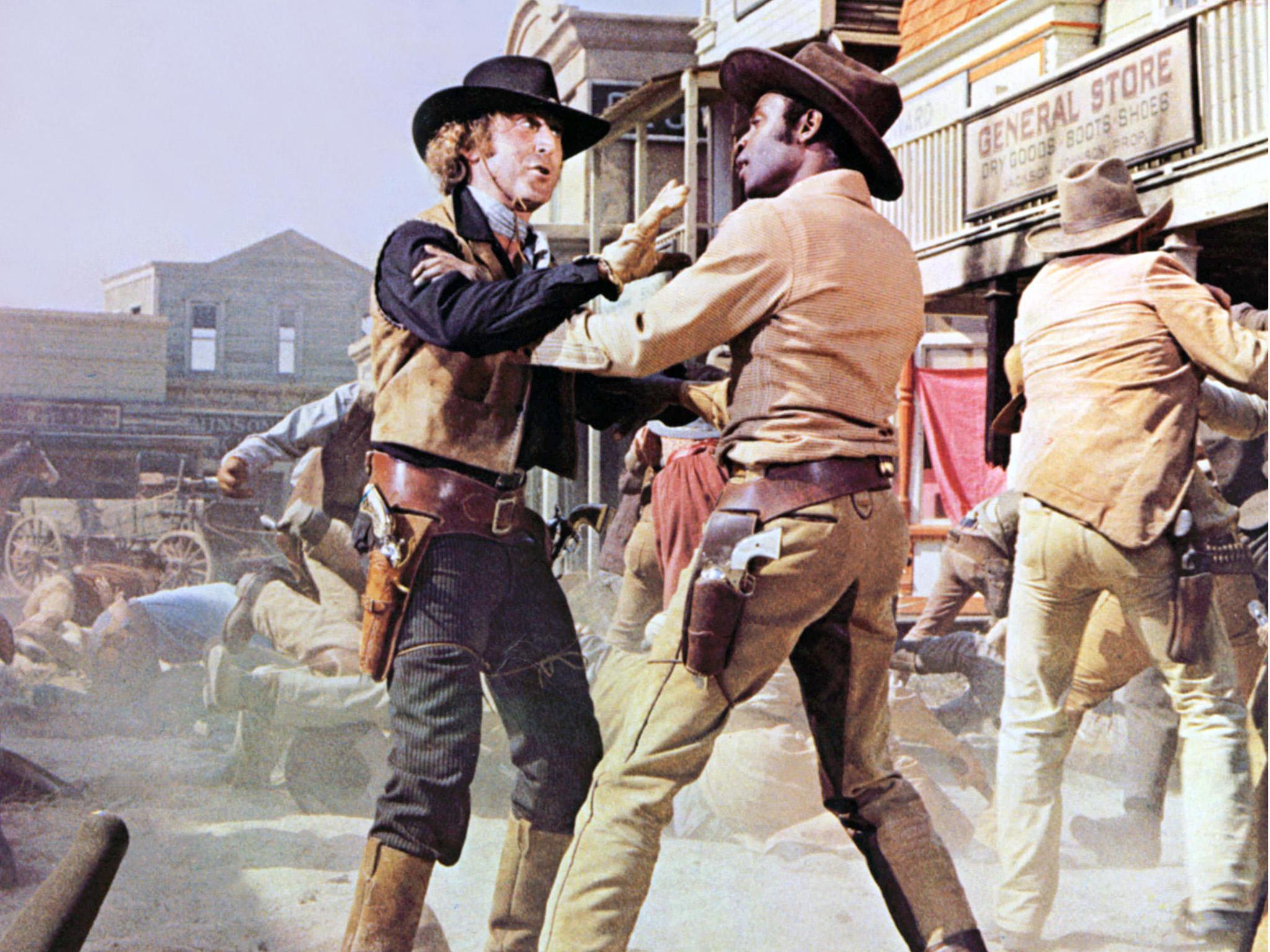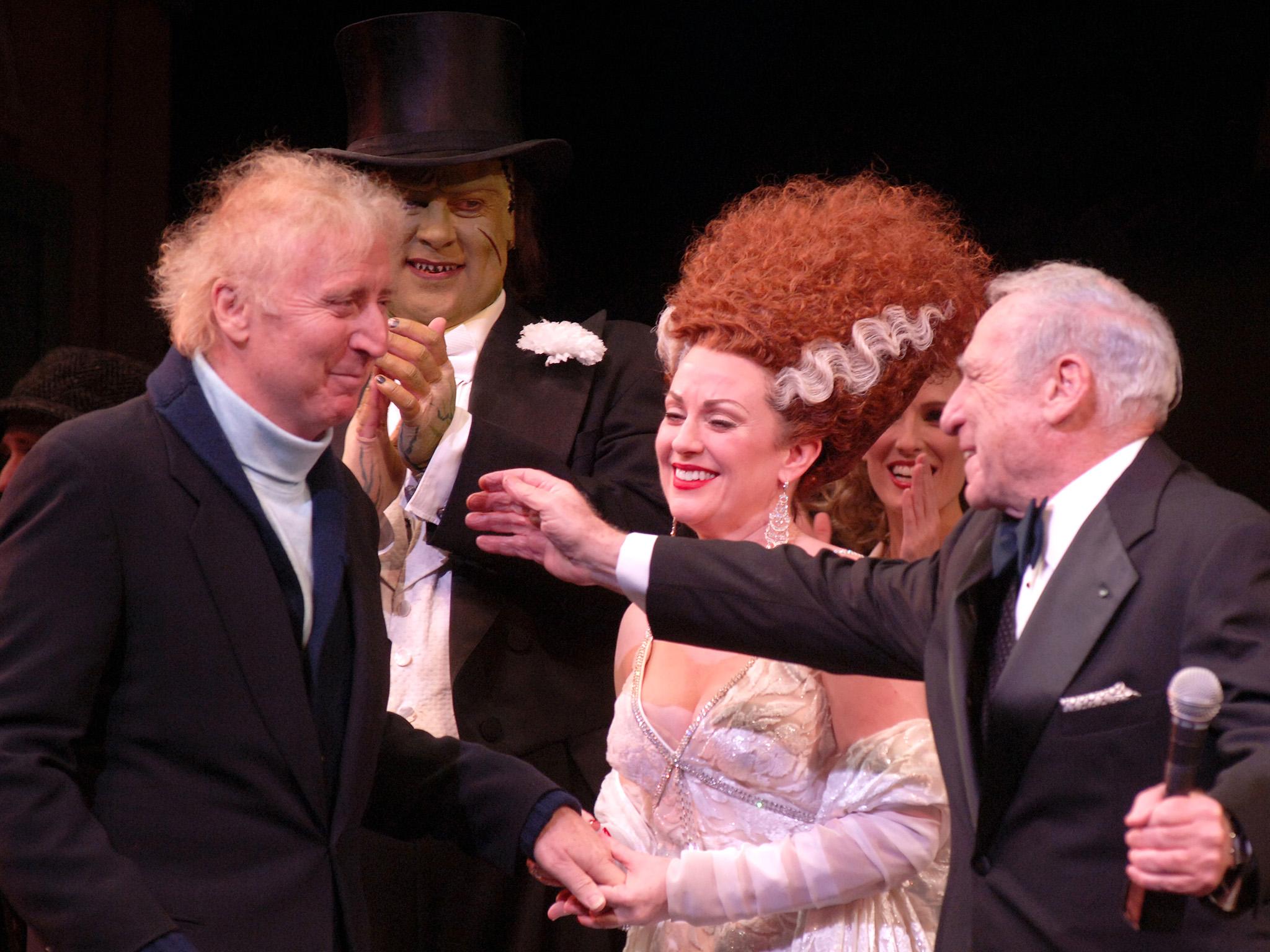How Young Frankenstein became a monster hit
They still meet once a week for lunch at the same spot in Beverly Hills... John Walters details the story of how Mel Brooks and Alan Ladd, along with the late Gene Wilder, brought to life the comedy classic 'Young Frankenstein'

”They meet every Friday for lunch at the same spot in Beverly Hills: the former studio head, the producer and the greatest living figure in American comedy. “We are the regulars,” says producer Michael Gruskoff, who is joined each week by Alan Ladd Jr. and the legendary Mel Brooks in what is a palm-tree-shrouded update of the Algonquin Round Table. Other charter members include directors Richard Donner (Superman), the late Paul Mazursky (An Unmarried Woman) and producer Jay Kanter, once an agent to Marlon Brando, Marilyn Monroe and Grace Kelly. “We occasionally invite a few special guests to round out the group such as Bette Midler, Norman Lear and Bernardo Bertolucci, who call when they’re in town. Mel gets final cut on who joins us because he picks up the bill.”
Friday lunches are not their first collaboration, nor their best. In 1973, Ladd was head of creative affairs at 20th Century Fox when Gruskoff and Brooks pitched him an unorthodox idea: a satire of James Whale’s classic 1930s Frankenstein films shot in black and white. Columbia Pictures had already passed on the idea.
“That’s all right,” said Ladd, greenlighting the project that would become Young Frankenstein. “All the old horror films were in black and white.”
Though it sounds odd now, doing business with Brooks in 1973 was a risky gambit for a studio executive, even one whose namesake father was an iconic screen presence. Brooks had won an Academy Award for best original screenplay in 1969 for The Producers, but the film barely broke even at the box office. His 1970 follow-up, The Twelve Chairs, was praised but earned even less. His Blazing Saddles had wrapped but not yet been released. Brooks’s wife, Anne Bancroft, who had won a best actress Oscar a decade earlier for The Miracle Worker, was the family breadwinner. “Mel needed a job,” Gruskoff says.

Meanwhile, at a time when big-budget blockbusters were promoting technological ‘advancements’ (“Earthquake in Sensurround!”), Gruskoff and Brooks were lobbying for the cinematic equivalent of a Model T. A black comedy was one thing; a black-and-white one was quite another. “A lot of theater owners wouldn’t take a movie unless it was in color,” writes Ladd in the recently released coffee-table book Young Frankenstein: The Story of the Making of the Film. “The truth is, I was worried about it, but I didn’t tell them that.”
Ladd made the proper call. The satire, starring Gene Wilder as the grandson of Dr. Frankenstein (“That’s Franken-STEEN!”), featured an incredible ensemble cast that included Peter Boyle, Marty Feldman, Madeline Kahn, Cloris Leachman and Teri Garr, as well as a hilarious cameo by a bearded Gene Hackman. It cost $2.4m to make and, despite opening in the same mid–December 1974 week as The Towering Inferno and The Godfather Part II, grossed $86m domestically ($413m in today’s dollars). In 2000, the American Film Institute ranked Young Frankenstein No. 13 on its list of the 100 funniest movies (note that three of the films ranked above it bear the imprint of either Brooks or Bancroft).
“To this day,” says Brooks, “I think it’s my best work.”
The story of how Young Frankenstein came to life dates back to the summer of 1959 and to Fire Island, a popular weekend getaway for New Yorkers. It was there that two young Jewish men from Brooklyn, Brooks and Gruskoff, would attend lavish, Gatsby-esque parties at the home of Broadway producer Charles Kasher. (An up-and-coming talent named Burt Bacharach would play the piano.) “I was in my early 20s, and my friends and I would cross paths with many fascinating people, including Mel,” says Gruskoff. “He was a decade older, and I didn’t think he knew who I was.”
Fourteen years later, Gruskoff had established himself as a man with whom to take a meeting in Hollywood. Gene Wilder’s agent at the time, Mike Medavoy, put the treatment for Young Frankenstein, which Wilder had conceived of, in Gruskoff’s hands. Medavoy forwarded Wilder’s request: Get Mel Brooks to direct it.
Gruskoff, who had not spoken to Brooks since that Fire Island summer, visited him at the Beverly Hills Hotel. Brooks was in Los Angeles for preproduction of Blazing Saddles. “I knocked on Mel’s door, he opened it, looked me up and down, and then slammed the door in my face,” recalls Gruskoff as if it were yesterday. “He reopened it and said, ‘You’re Michael Gruskoff? You pisher, you! Where are your friends? Where’s your bathing suit?’”

Watch Apple TV+ free for 7 day
New subscribers only. £9.99/mo. after free trial. Plan auto-renews until cancelled.
ADVERTISEMENT. If you sign up to this service we will earn commission. This revenue helps to fund journalism across The Independent.

Watch Apple TV+ free for 7 day
New subscribers only. £9.99/mo. after free trial. Plan auto-renews until cancelled.
ADVERTISEMENT. If you sign up to this service we will earn commission. This revenue helps to fund journalism across The Independent.

Brooks listened to Gruskoff’s spiel and within five minutes had made up his mind. “You produce the movie,” Brooks said. “Get us a deal. I need the money.”
More than 40 years later, Gruskoff found himself pitching Young Frankenstein to his old friend and weekly lunch companion all over again. In 2015, Gruskoff had been asked to pore over photos taken on the set of the filming of the movie for a retrospective video. Sure, he said, how many photos are there? The reply: 9,240. “You’re really going to make me work for this, aren’t you?” said Gruskoff.
As Gruskoff lost himself in the pictures, he remembered that the Young Frankenstein shoot was the most enjoyable experience of his career, and he knew Brooks felt the same way. Gruskoff pitched Brooks a coffee-table book on the making of the movie. “I love it!” said Brooks. “Let’s do it.”
The 200-page tome provides a terrific inside-the-laboratory glimpse on the making of the film. Wilder, for instance, was n
ot originally slated to play the Waco Kid in Blazing Saddles (he had co-starred in The Producers in 1968). On the first day of filming for the Western satire, Brooks’s choice, Gig Young, showed the pernicious effects of a recurring alcohol problem. (“We hung him upside down in the cell,” Brooks writes, “and green stuff started spewing out of his mouth.”) That night, Brooks phoned Wilder and offered him the role. “Mel, I know every line,” replied Wilder, who passed away last August.
Wilder’s inclusion in Blazing Saddles was fortuitous for a number of reasons. First, it was one of the great comic performances of all time. Second, it allowed Brooks and Wilder to collaborate on the script for Young Frankenstein. Brooks had already signed on to direct the film but not to work on the script. “My dream is for you to write it with me,” Wilder told Brooks in between takes one day.

“Whoa,” said Brooks. “You got any money on you?”
“I have $57,” Wilder replied. “It’s a beginning,” said Brooks. “I’ll take it.”
Within a year, both Blazing Saddles and Young Frankenstein would be released, arguably the greatest comic twofer in one year for any director (Brooks) and star (Wilder). In the book, Brooks writes about how Wilder pitched him additional scenes on the last day of the shoot (in an era before director’s-cut DVDs existed). “Gene, it’s over,” Brooks said. “It’s got a beginning, middle and end. Perfect.”
Wilder buried his hands in his face. “Mel, I don’t want to go home,” he said. “I want to stay here. This is the happiest time of my life.”
Blazing Saddles would gross $120m domestically, putting the total for both comedies above $200m. And with that, a comic master’s life took a dramatic turn. Before those two films came out, Brooks was not a bankable director. “To the studios, I was just an interesting guy to meet for lunch,” Brooks writes.
He still is.
© Newsweek
Join our commenting forum
Join thought-provoking conversations, follow other Independent readers and see their replies
Comments
Bookmark popover
Removed from bookmarks